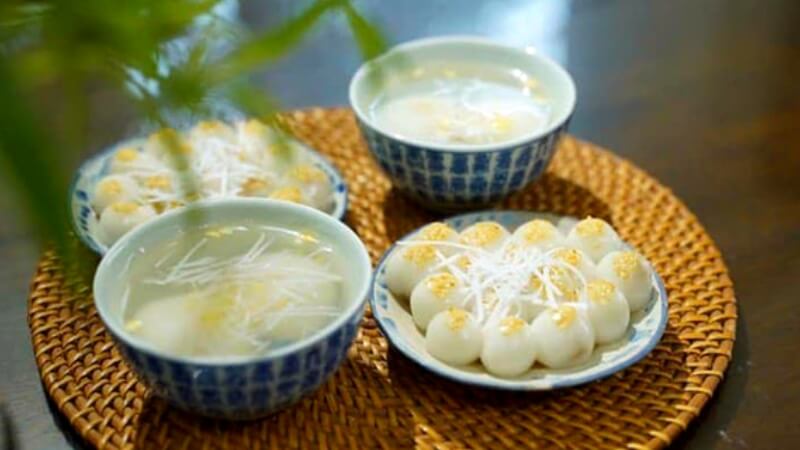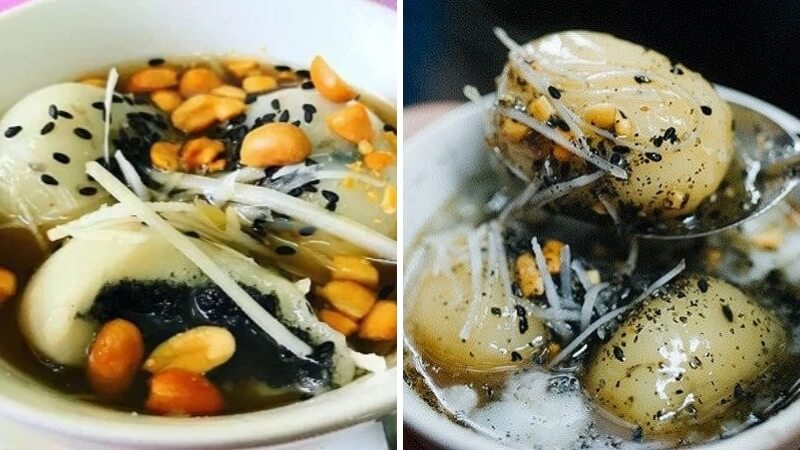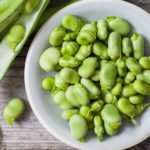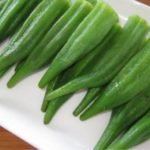Vietnamese cuisine boasts a plethora of delicious traditional cakes that have been beloved for generations. Among these are bánh trôi, bánh chay, and bánh trôi tàu—unique treats with distinct characteristics. Let’s delve into the world of these delectable delights and learn how to differentiate them.
1. Understanding Bánh Trôi, Bánh Chay, and Bánh Trôi Tàu:
What is Bánh Trôi?
Also known as bánh trôi nước or chè trôi nước, this cake is a symbol of Vietnamese tradition. It is made from rice flour, glutinous rice flour, and mung bean, resulting in a chewy and delicate texture.
 What is Bánh Trôi?
What is Bánh Trôi?
Bánh trôi are round balls, with a layer of flour on the outside and a variety of fillings on the inside, such as mung bean, grated coconut, sugar, and sesame. They are boiled in a pot of boiling water and served just before they float to the surface, accompanied by a slightly thick syrup and a sprinkling of sesame seeds (or grated coconut).
What is Bánh Chay?
 What is Bánh Chay
What is Bánh Chay
Bánh chay are shaped into flat rounds, either without any filling or with a mung bean filling. They are made from a combination of rice flour, tapioca starch, mung beans, sugar, and sesame seeds. Similar to bánh trôi, they are boiled in a pot of boiling water and removed once they float to the surface. They are then placed in a small bowl, topped with syrup, and garnished with roasted sesame seeds for a delightful presentation.
What is Bánh Trôi Tàu?
Bánh trôi tàu, also known as chè thang viên, has its origins in China and was introduced to Vietnam by the Chinese community. Over time, the recipe has been adapted to suit the tastes of different regions in Vietnam.
 What is Bánh Trôi Tàu?
What is Bánh Trôi Tàu?
These cakes are made from glutinous rice flour, with a filling of mung bean or black sesame. The unique feature of this cake is the cooking process; the black sesame filling is cooked with dried jujubes, resulting in a sweet and fragrant broth. The exterior of the cake is rolled in a mixture of black sesame and grated coconut. Bánh trôi tàu is typically served with hot ginger syrup, making it an ideal treat for cold winter days.
The combination of sweet broth, chewy cake, and the aromatic black sesame filling creates an extraordinary flavor profile that is a must-try.
2. Distinguishing Bánh Trôi, Bánh Chay, and Bánh Trôi Tàu:
Among the three cakes, bánh trôi and bánh chay are the most challenging to differentiate. Bánh trôi tàu, on the other hand, stands out due to its distinctive black sesame filling.
Notably, bánh trôi and bánh chay hold a special place in the hearts of the Vietnamese, as they are traditional treats commonly enjoyed during the Tết Hàn Thực festival. Both cakes are made from rice flour and embody the cultural heritage of a rice-farming civilization.
 Distinguishing Bánh Trôi, Bánh Chay, and Bánh Trôi Tàu
Distinguishing Bánh Trôi, Bánh Chay, and Bánh Trôi Tàu
While it is easy to confuse bánh trôi and bánh chay due to their similar ingredients and preparation methods, each has its own distinct flavor, characteristics, and presentation:
Fillings:
- Bánh trôi offers a variety of fillings, including mung bean, taro, honey, and grated coconut.
- Bánh chay, on the other hand, keeps it simple with a mung bean filling or no filling at all.
Shape and Presentation:
- Bánh trôi are shaped into round balls.
- Bánh chay are flattened in the middle during shaping.
Serving Suggestions:
- Bánh trôi is traditionally served with syrup or ginger syrup, garnished with a sprinkle of sesame seeds or grated coconut. This is why it is called “bánh trôi nước” (“floating cake in syrup”).
- Bánh chay, on the other hand, is usually placed on a dish and topped with a sprinkle of sesame seeds.
Now you know the differences between bánh trôi, bánh trôi tàu, and bánh chay, along with some interesting facts about these delicious treats. We hope this information enriches your culinary journey and inspires you to explore more of Vietnam’s fascinating food culture!






































